Selected commissions – site under construction
127 Untitled Relief
1959-62, 617.5 x 587.5 cm, aluminium, University of Leeds: Stage at Leeds, Beech Grove Terrace. Originally at Bodington Hall of Residence, re-sited 2016.




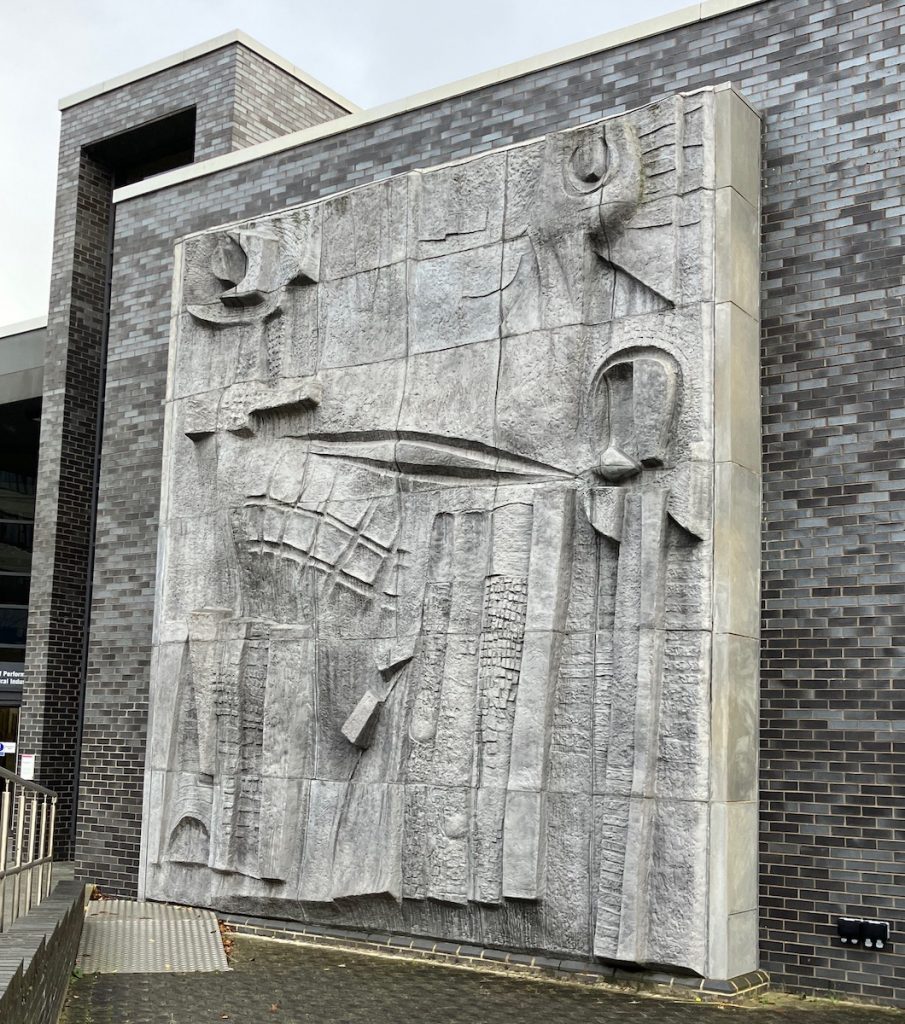



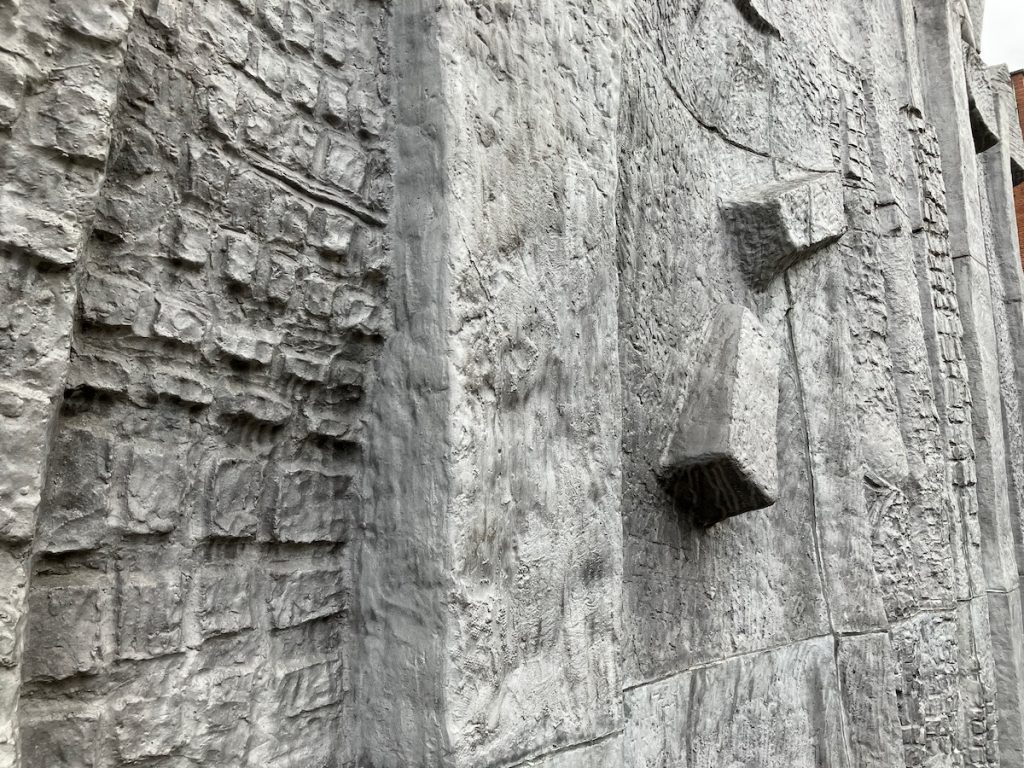



Historic England Listed Monument: details of listing on National Heritage List of England
Summary
Mural relief. 1959-1962. Hubert Dalwood commissioned by Denis Mason-Jones of Jones & Stocks, who designed Bodington Hall residences for the University of Leeds. Aluminium.
Reasons for Designation
The untitled mural relief by Hubert Dalwood of 1959-1962 is listed at Grade II for the following principal reasons: * Artist: Hubert Dalwood was one of Britain’s leading post-war sculptors with examples of his work in many important art galleries and museums around the world, as well as the public realm, notably universities. * Date: the mural relief at the University of Leeds is Dalwood’s first large mural relief, marking a new venture on a wholly different scale and technical complexity to anything he had previously made; it dates from the period which is critically considered to be his great period in terms of the quality of his work. * Aesthetic quality: the mural relief has a high level of aesthetic and artistic quality, emanating a primeval force in the abstract forms which bring to mind an earlier civilisation in the form of archaeological remnants and the powerful shapes of ritualistic, totemic figures; the manipulation of scale and perspective emphasizes the sense of primitive mystery. * Materials: Dalwood began casting his work in aluminium whilst a Gregory Fellow at the University of Leeds (1955-1960). It became his favoured material for which he is well known, being particularly effective when cast from clay models, as here, when the working by hand of the clay was translated into the cast metal, giving the surface an immediacy and humanism. * Historic interest: as a good example of the commissioning of public artworks in the realm of expanding universities and further education colleges in the post-war era, an approach also occurring at this time in new towns and public housing schemes as a way of introducing human interest and aesthetic pleasure into these environments.
History
Hubert Dalwood (1924-1967) trained at Bath Academy of Arts, Corsham Court, Wiltshire (1946-9), where his principal tutor was Kenneth Armitage. In 1955 he became a Gregory Fellow at the University of Leeds and joined a group of innovative artists and teachers centred on the Leeds College of Art under the leadership of Harry Thubron. He subsequently taught at a number of art schools, including the Royal College of Art, and was appointed head of sculpture at both the Hornsey School of Art, north London (1968), the Central School of Art and Design (1974).
The establishment of Dalwood’s reputation was marked in 1959 by the award of first prize at the John Moore’s exhibition in Liverpool for his ovoid ‘Large Object’ (casts in the Tate collection, Museum of Modern Art, New York, and Art Gallery of Ontario, Toronto). He received a number of commissions, including works for the universities of Liverpool, Leeds, Manchester, and Oxford. Examples of his work are held in collections in art galleries and museums around the world.
Dalwood’s work was initially figurative, but, influenced by The St Ives School, and having worked for Barbara Hepworth, from the late 1950s he deliberately moved into more abstract and textured pieces, using the landscape as inspiration, his favoured material being aluminium. It was whilst he was at Leeds that Dalwood began to cast his work in aluminium, which was then anodised to prevent further oxidation. The sculptures were frequently coloured using a number of processes; a dull grey finish, as at Bodington Hall, could be achieved by rubbing the aluminium with hydrochloric acid (historically called muriatic acid), applying linseed oil, and rubbing with steel wool.
The untitled mural relief for the University of Leeds was commissioned in 1959 by the architect Denis Mason-Jones of Jones & Stocks, who designed the buildings at Bodington Hall (1959-1963). Dalwood submitted a number of maquettes, making reference to Henry Moore’s brick relief at Bouwcentrum, Rotterdam. The contract was signed on 11 June 1959. He then rented a hangar at Yeadon aerodrome, and with two assistants, David Seger and Tom Pemberton, built an armature of iron rods welded to angle irons screwed to the wall. This was covered in chicken wire and clay pushed into the mesh to correspond to the maquette. At the final stage Dalwood modelled the surface, adjusting scale and texture. The relief was made in thirty-six sections (approximately four feet square), Plaster casts were taken and sent to North Road Foundry, Ferrybridge, in February 1961, where the panels were cast in aluminium. The panels were all cast, erected, and anodised by late June 1961, though the side panels were not fitted until 1962.
Details
This record was subjected to a Minor Amendment on 19/04/2016
The mural relief comprises a rectangular panel 6.4m high by 6.1m wide formed from thirty-six small panels or tessarae each approximately 122 cm square (4ft x 4ft), attached to the left-hand end of the south elevation of the refectory building. The panels are cast in aluminium and the surface is matt grey in appearance. They give the mural relief an overlying grid-like structure upon which is superimposed a large-scale abstracted organic composition. A series of perpendiculars occupy the lower section, with three totemic forms with more humanoid characteristics situated towards the two upper corners and the lower right-hand side. The mural relief deliberately retains the appearance of the worked clay from which the original panels were made. In addition, a variety of textures are used reminiscent of scales, crocodile skin, and random blockwork. These are depicted using differing scales of size and perspective. The degree of relief is varied across the surface from shallow undulations to stronger projecting detail which forms deep shadows. The mural relief is signed in the lower right-hand corner with the initials HCD (Hubert Cyril Dalwood). Its lower edge and right-hand side are chamfered, whilst panels of approximately 122 cm high x 61 cm wide wrap round the corner of the building on the left-hand side.
125 Untitled (Three Uprights)
1959-60, 366 cm high, aluminium. University of Liverpool, Abercromby Square. First image shows original site between the Oliver Lodge and the Chadwick Building. Images thanks to Modern Mooch
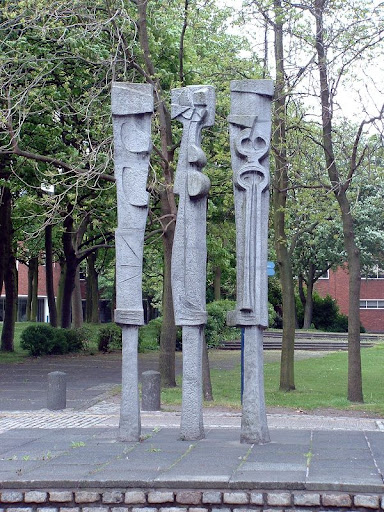

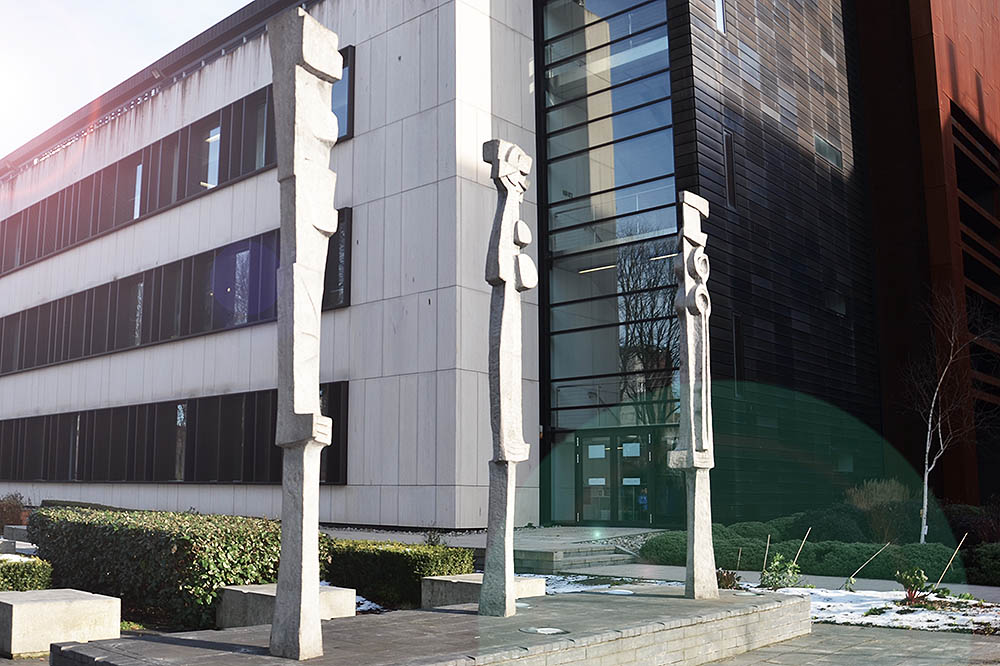

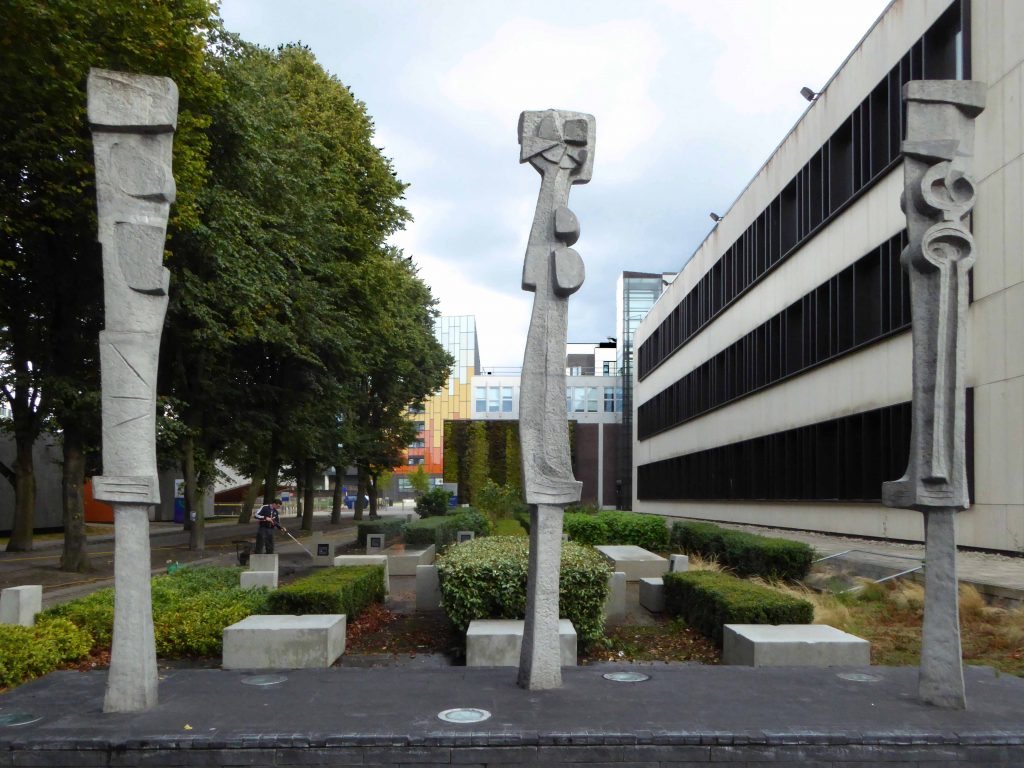

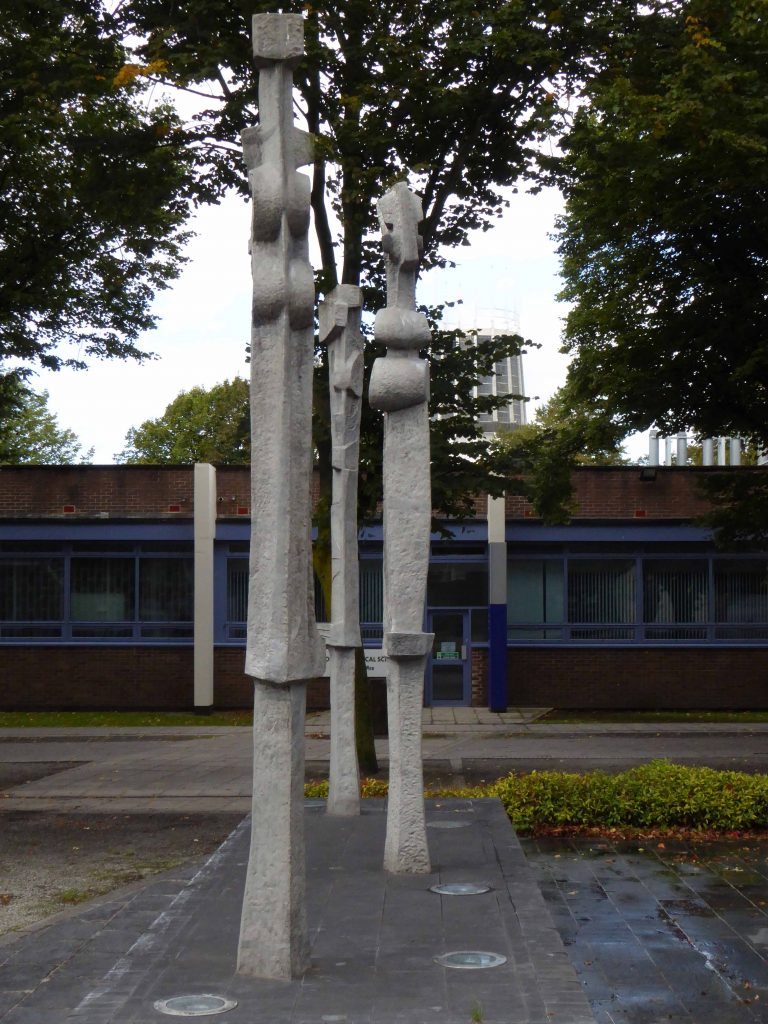



159 Untitled Relief
1963-64, 732 x 732, Aluminium, University of Manchester


158 Untitled, (Maquette for Manchester relief)
Painted plaster cast from a clay original, with silver paint (to represent cast aluminium), mounted on plywood panel, 93 x 93 cm

This maquette is inscribed with lines to aid the enlarging process, each square corresponded to about three feet square on the large piece. The rough alteration, cutting a section of the design down, made near the top left hand corner was a made by Dalwood as work on the large panel progressed. This design change can be seen in the commissioned work.
Steel mesh sheets were fixed to a steel framework and clay was pushed into the mesh to create the panel’s surface. The clay had to be kept moist during construction by enclosing the whole panel in damp towelling and polythene sheeting, opening up the working areas as needed.